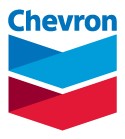A cover letter introduces your resume to a potential employer. It is the opportunity for you to summarize your qualities and skills that will pique the interest of the reader to look at your resume. The cover letter is not a restatement of your resume; rather it shows your focused interest in something exciting they do and your desire to serve their organization. The more research you do before the initial contact with a company representative, the more prepared you will be, to show them your alignment with their needs.
To ensure that your cover letters are well-written, avoid the following mistakes: Don’t exceed one page (unless you have extensive experience or publications). Don’t have grammatical, punctuation, or spelling errors.
Before sending a cover letter, check the following list:
Three Parts of Cover Letter
1st Paragraph
The 1st paragraph is the opening, where you identify the purpose of the letter. Identify the work you are applying for, by position when possible. You should indicate how you identified the opportunity, be it through the organization’s website, business experience, or a personal referral. A referral provides the strongest opportunity to connect. ( Example: I am writing you at the recommendation of James Wilson from your Houston office...) If you do not have a referral, consider identifying what you have learned about their organization, strategy, or core business that compels you to want to be a part of their team. (Example: While researching your company, I am learning about the industry-leading work you are performing by focusing on reducing rework in your drive train manufacturing process.)2nd Paragraph
The 2nd paragraph is the section where you help the reader see how you would like to align your interests and abilities with their goals and the needs on their shopping list. Relate to the job description and what the company is seeking. This is your opportunity to let the employer know that you are aware of their needs and you are ready and able to fill those needs. If there is anything in your background that might be of special interest, you should indicate this in the second paragraph as well. Do not spend too much space complimenting the company, as they already know about themselves and are more interested in learning about how you align with their list of needs.3rd Paragraph
The 3rd paragraph is the closing, where you once again express your interest in the company and your excitement relating to the specific position. (For example, I look forward to the opportunity to meet with you to discuss, in greater detail, areas where my skills and experience meet your needs.) It is important to state your plans to follow up in a timely manner, rather than "hoping to hear from you soon". Let them know that you intend to be proactive in your job search, which is often very appealing to a potential employer. Your cover letter heading – same as your resume heading will assure you provide a reliable mechanism for them to contact you.Cover Letter DON’Ts
To ensure that your cover letters are well-written, avoid the following mistakes: Don’t exceed one page (unless you have extensive experience or publications). Don’t have grammatical, punctuation, or spelling errors.
- Don’t simply repeat what is in the resume.
- Don’t use pre-printed form letters rather than individually typed letters. Don’t use a different paper than your resume paper.
- Don’t have lengthy paragraphs. Avoid run-on sentences.
- Don’t forget to sign the letter, which would indicate a lack of attention to detail.
- Don’t use overly informal language, as this is your first chance to make a “business” impression. Avoid using Aggie-centric phrasing, such as “Howdy” or “Gig ‘em.”
- Don’t include inappropriate information (is your e-mail address professional) and do not omit critical data.
Cover Letter Checklist
Before sending a cover letter, check the following list:
- Is the letter original and specific to the position?
- Have you addressed the letter to the right person, including the appropriate gender and correct name spelling?
- Will the letter capture the reader’s attention?
